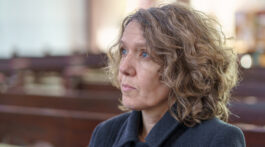“By the end of this lesson, I hope to convince you never to give another dollar to the Adventist church.” That’s how I began a lesson on tithing some years ago. When the head elder showed up–he was not a regular attendee–and I was pretty sure it was because of rumors that I was teaching heresy, I reconsidered for a second, but only one second. Because I knew where I was going with the lesson, I had no concerns about the content.
You won’t be surprised to learn that I had everyone’s attention! After the lesson, the head elder spoke to me. “I have to admit your opening statement shocked me” he said. “But I thought you taught excellent lesson.” How did I manage to pull that off? I knew exactly where I was going, and I knew how to guide the discussion in such a way that we would get there. That is the basic craft of teaching what I call a “guided discussion.”
What do I mean by craft? Any creative endeavor— and good teaching is a very creative endeavor — is both an art and a craft. The artistic creative vision is something you bring to the project. That will be unique to each artist, in this case, to each teacher. But no artist of any kind can realize their artistic vision without understanding and learning their craft.
For example, for a painter, craft is knowing how to mix colors, what kind of brushes are used for what kind of effects, how to apply paint to achieve your goals. Even down to such details as how to clean brushes. The famous painter Picasso said something like this: When critics get together, they discuss form and color and meaning. When painters get together, they discuss where to buy turpentine.
Potters concern themselves with how to mix clay and water, how to fire the raw pots, the technique of drawing a pot on a wheel. Writers talk about active and passive verbs, developing character, maintaining tension. Each creative endeavor has its own craft involved, whether it’s sanding world with the grain rather than across it, the proper temperature for baking a pumpkin pie, or how to fit his sleeve onto a blouse. In and of themselves, these are mere techniques. But achieving the artist’s creative vision is impossible without mastering them.
Picasso said something like this: When critics get together, they discuss form and color and meaning. When painters get together, they discuss where to buy turpentine.
Although I can share with you how I go about the creative process of preparing a lesson, I cannot tell you how to be creative. In fact, that would be a contradiction in terms, because it wouldn’t be your creativity but me sharing my creative vision. Never fear, if God put you in a position to teach, He will empower you with the creativity necessary. No, I can’t tell you how to be creative, but I can share with you the basics of the craft.
That’s what I’ve been doing with these guidelines. The first of Stephen Covey’s The 7 Habits of Highly Effective People, tells us to “Begin with the end in view.” As you are developing your lesson, you need to know what is the conclusion, the central point you want the class to take away. For the class on tithing, that central truth was, “We pay tithe to God. The church is merely the human agency that receives that tithe.”
Why does that matter? Because it is all too human to expect that if we pay for something, we should get something in return.This expectation easily transfers to the church, and if the church fails us, or disappoints us, or disagrees with us, we think we’re not getting what we paid for, and we have a right to withhold tithe. Obviously, there is a time when good stewardship might make us question paying tithe to a certain human entity. But most of the time, when people want withhold tithe, this is not the case. It is generally over something petty. And it may be petty behavior by the church!
If I’m paying money to the church, then that petty behavior is going to put me off. But if I am paying tithe to God in gratitude for his many blessings and then trust that he knows what is best for me, I’m not going to let petty things get in the way. That was my message. “Pay your tithe to God, and except in the most extreme cases, let God deal with the church.”
I started out with that provocative statement because I wanted to get everyone’s attention. I wanted to make the lesson memorable. So that took care of the first half of Guideline Six: I knew where I was going.
.How do you choose the lesson’s destination?
I have said that the lesson should rarely contain more than three main points, never more than five. But that doesn’t mean all main points are equal. The teacher should choose one point as the theme for the entire lesson. Usually this will be made plain, perhaps even in the lesson title itself. When in doubt, choose the main point that convicts you the most, the one you have most difficulty with, the one that makes you most uncomfortable. That will be a lesson worth teaching.
In my lesson on tithing, I chose the theme that tempts me the most–withholding tithe because I’m unhappy with church policy. That made it easy for me to teach effectively. I personally knew all the nuances of that temptation, and could lead the class through my own journey of discovery. Your class deserves your honesty, your authenticity. If you’re not willing to share that, yours will be just another superficial study; if it’s not worth your best effort, why should the class bother?
An effective lesson must have a real life practical purpose, which is clear in the teacher’s mind. However, knowing where you’re going is not enough. Had I begun with the statement about not giving money to the church and not reached my conclusion, the lesson would have been a disaster.
But far too many lessons don’t reach an end, they just sort of trail off as time runs out. That is not always a disaster, but it is always a tragedy. People come together to study God’s word deserve better; they deserve the opportunity to discover or experience a truth in a way that can change their lives










